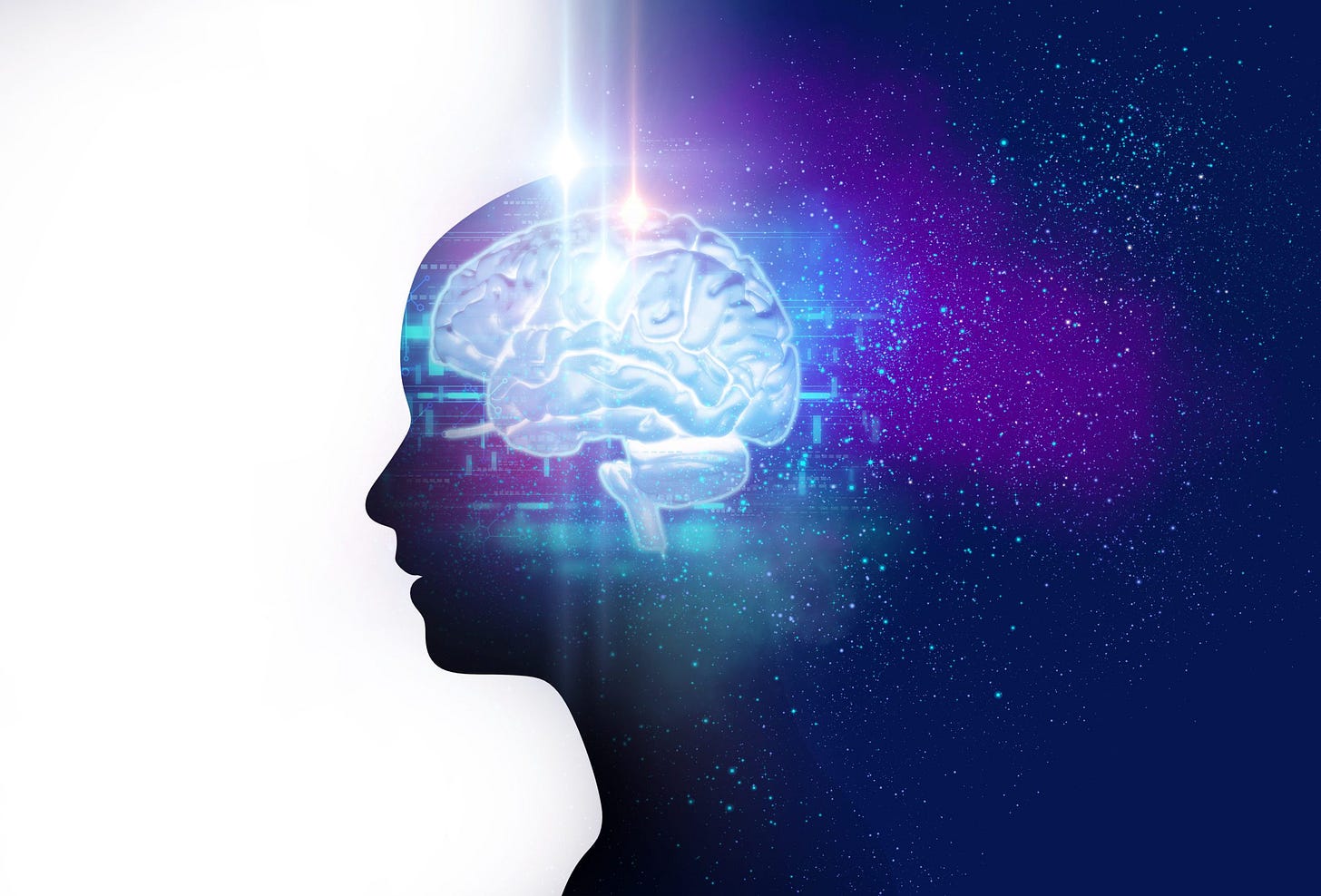Your Brain Is Making Reality Up: The Reverse Inference Problem
Your brain doesn't detect reality—it creates it by predicting what's happening based on past experience. Here's why that matters for your daily life.
Fasten you seatbelt… You may not realize it, but you’ve never actually experienced reality. Not once. Not even right now, while you’re reading this. Oops.
Before you close this tab and question my credentials, let me explain what I mean. Your brain—that wrinkled three-pound universe crammed inside your skull—isn’t some passive receiver picking up the world’s broadcast signal. It’s more like a jazz musician riffing on barely-audible notes from the audience, improvising a performance it insists is the sheet music.
The Dark Room Problem
Picture your brain locked in a sensory deprivation tank, which is essentially what your skull is. No windows, no direct access to what’s “out there.” All it gets are these ambiguous electrical signals bouncing in from your sensory surfaces. A vibration hits your eardrum—but what caused it? The brain receives the effect and has to work backwards to guess the cause.
This is what neuroscientists call the reverse inference problem, and it’s the central challenge your brain faces every microsecond of your existence. That loud bang you just heard? Your brain is frantically flipping through its mental catalog: Car backfire? Slamming door? Gunshot? The stakes are high because the wrong guess could mean the difference between annoyance and mortal danger.
So what does your brain do? It cheats. It uses the only other resource it has: every single thing that’s ever happened to you.
Prediction Over Perception
Here’s where things get genuinely strange. Your brain doesn’t wait around to carefully analyze incoming data like some meticulous detective. Instead, it’s constantly throwing predictions at the world, checking if they stick. It’s running a simulation of what it expects to happen based on similar situations from your past, then quickly comparing that prediction to the incoming signals.
When neuroscientists say the brain is “running a model,” they’re not quite accurate. Your brain isn’t modeling the external world—it’s modeling your body’s relationship to that world. It’s predicting what your body needs to do next, what sensations you’re about to feel, what experience you’re about to have.
Think of it this way: your brain is creating categories on the fly. Not the neat, definitional categories you learned in school (”an apple is a fruit with these specific characteristics”), but functional, context-dependent categories. These apples are for baking. Those apples are for throwing at your annoying neighbor. Same object, completely different meanings based on the situation and your goals.
The Reality We Agree On
This gets even weirder when we zoom out to the social level. Because human brains categorize based on function rather than physical properties, we’ve accidentally created something extraordinary: social reality.
Money is the obvious example. Take a hundred-dollar bill out of your wallet and really look at it. It’s cotton and linen, maybe some polymer. Utterly useless for survival. You can’t eat it, you can’t build shelter with it, you can’t defend yourself with it (well, not effectively). Yet we’ve collectively hallucinated that this piece of paper has immense value, and because we all agree, it does.
But here’s what keeps me up at night as a psychologist: emotions might work the same way. That scowling face across from you on the subway? Your brain imposes meaning on it—threat, anger, contempt. But that facial configuration didn’t evolve with those meanings attached. We’ve socially agreed that certain arrangements of facial muscles mean certain things, and so they do. In a different culture, that same scowl might signal concentration, or confusion, or nothing in particular.
Countries, governments, citizenship, immigrant status—all social realities. Lines we’ve drawn and collectively agreed to treat as solid barriers. Your brain takes these abstract, invented categories and experiences them as concrete as the chair you’re sitting in.
The Imagination Trap
The good news is that this predictive, category-building brain gives us imagination. Your brain can mix and match fragments of past experience to conjure entirely new scenarios you’ve never encountered. This is how we write novels, design buildings, plan vacations, and worry about presentations next week.
The bad news is we’re almost too good at it. Our brains are so skilled at generating predictions divorced from immediate sensory input that we spend most of our lives somewhere other than the present moment. You’re physically at dinner with your family but mentally rehearsing tomorrow’s difficult conversation. You’re in the shower but re-litigating an argument from three years ago.
This is why mindfulness practices exist—they’re essentially training wheels for constraining your brain’s tendency to wander away from the sensory signals actually arriving at your doorstep. You’re learning to adjust the balance between prediction and perception, between imagination and present-moment awareness.
So What?
Does any of this matter for your daily life? Absolutely. Understanding that your brain constructs your experience means recognizing that your emotional reactions, your interpretations of others’ behavior, your very sense of reality—these aren’t objective truths. They’re your brain’s best guesses based on your unique history.
That colleague who seems perpetually hostile? Maybe. Or maybe your brain, shaped by past experiences with similar people, is predicting hostility and constructing that experience. The traffic jam that’s “ruining your day”? Your brain is categorizing a neutral event (cars moving slowly) as a catastrophe because of how it predicts this will affect your goals.
You’re not trapped by these predictions. But you do need to recognize that the skull isn’t a prison—it’s more like a studio where your brain is constantly improvising reality. And once you understand you’re part of the creative process, you can start making more intentional choices about what kind of reality you want to construct.
Just don’t think about this too hard while driving. Your brain’s got enough reverse inference problems to solve already.



"Where there is perception, there is deception"
Diamond Sutra
Maybe is the answer to everything